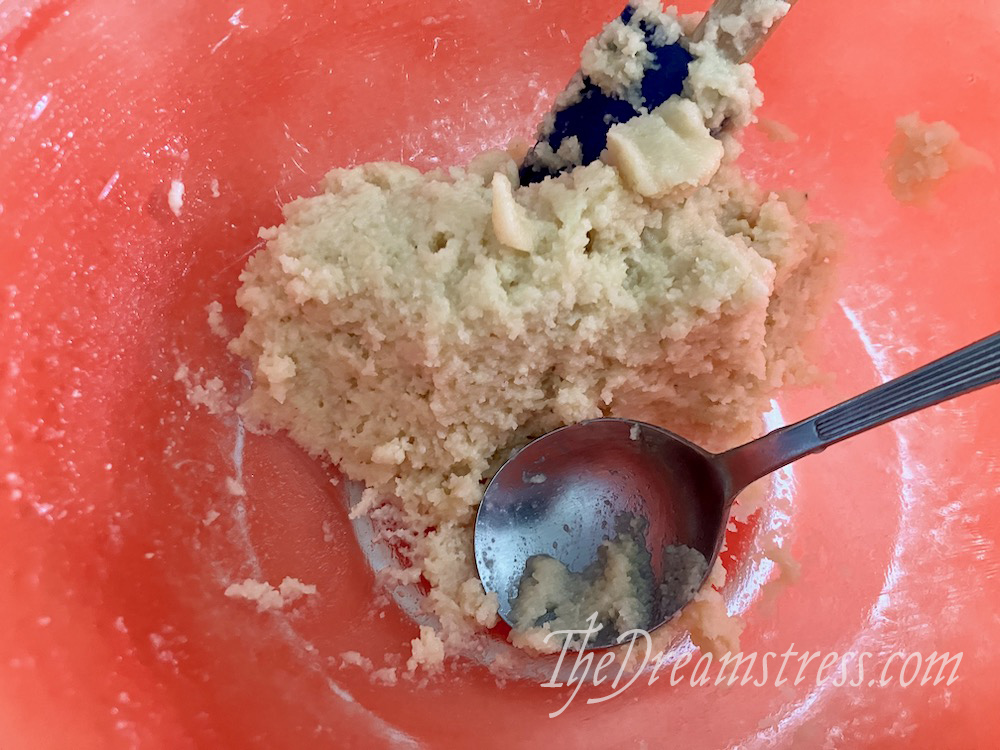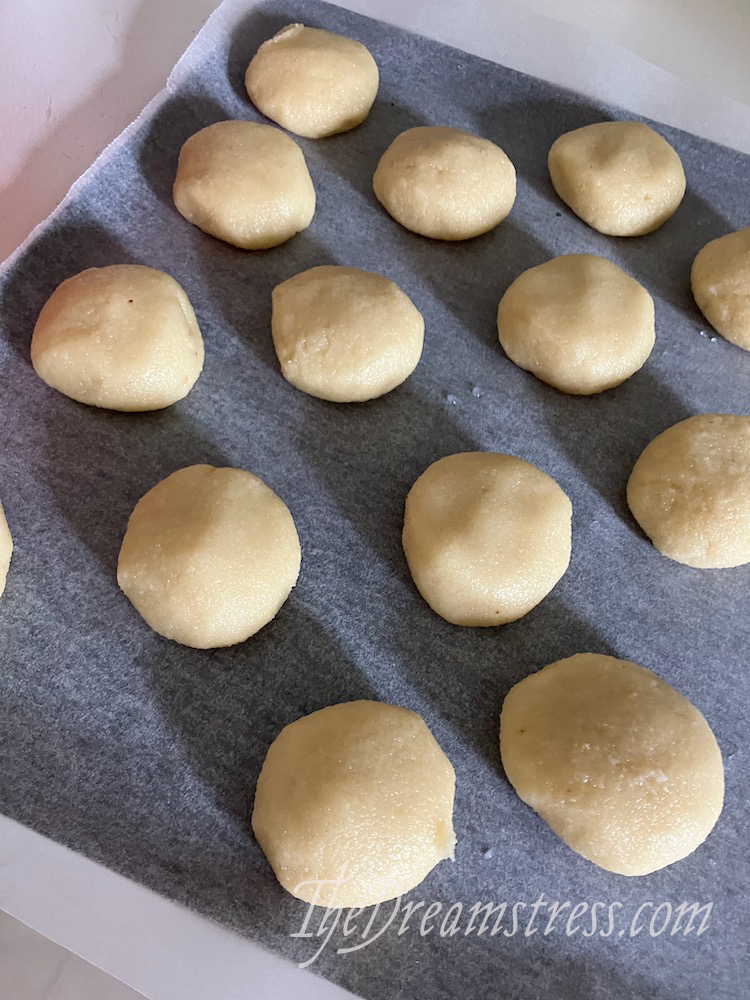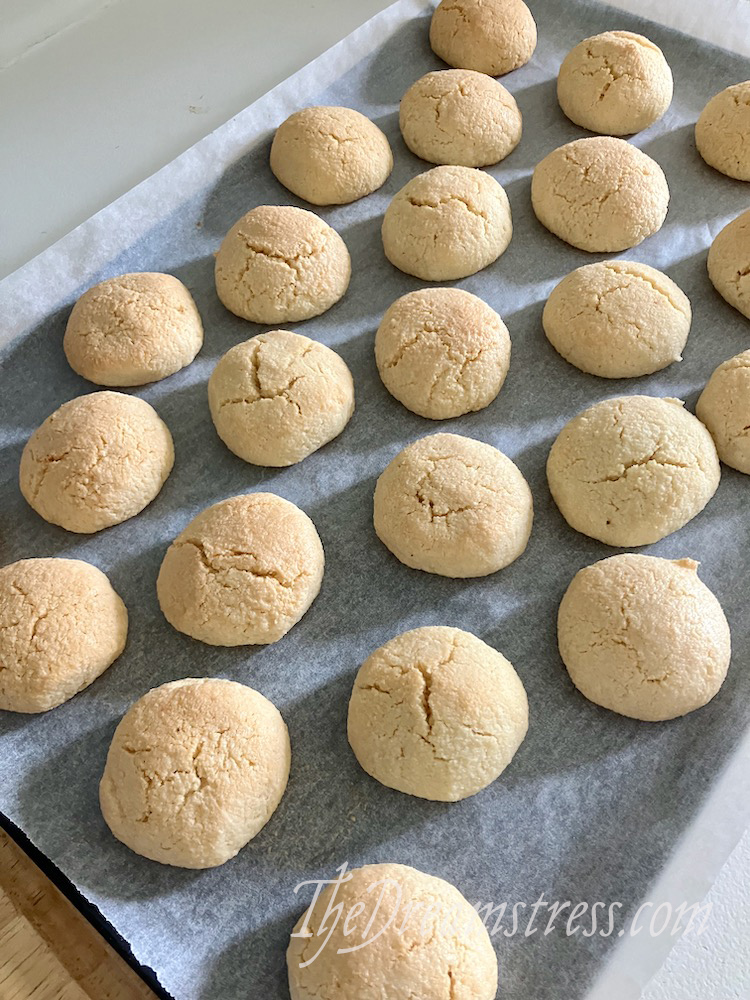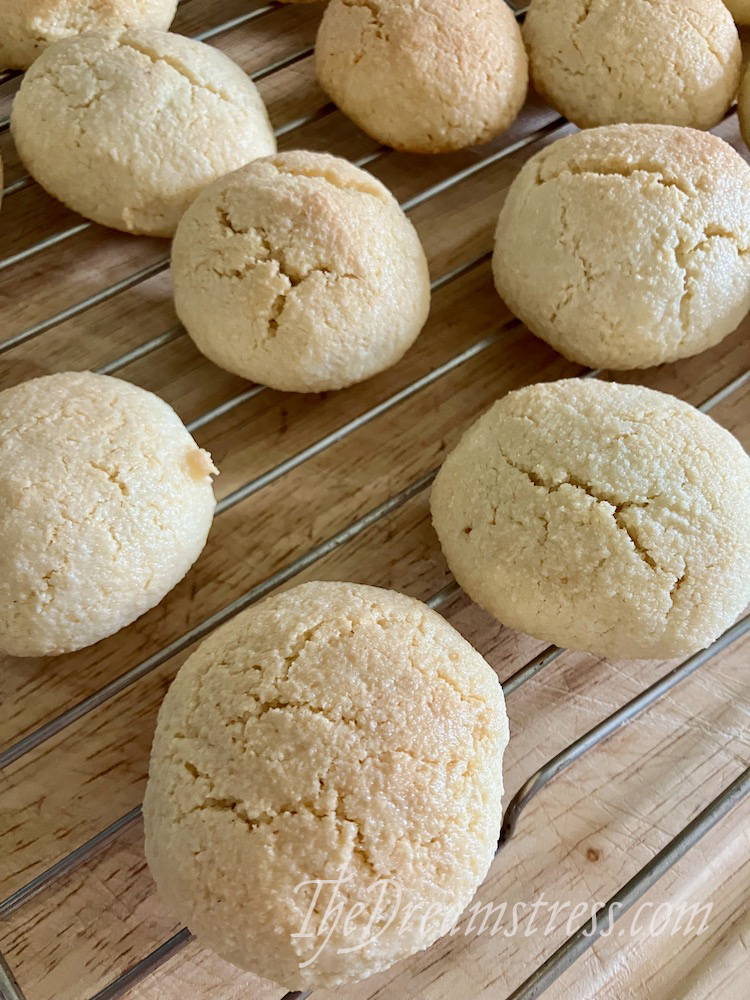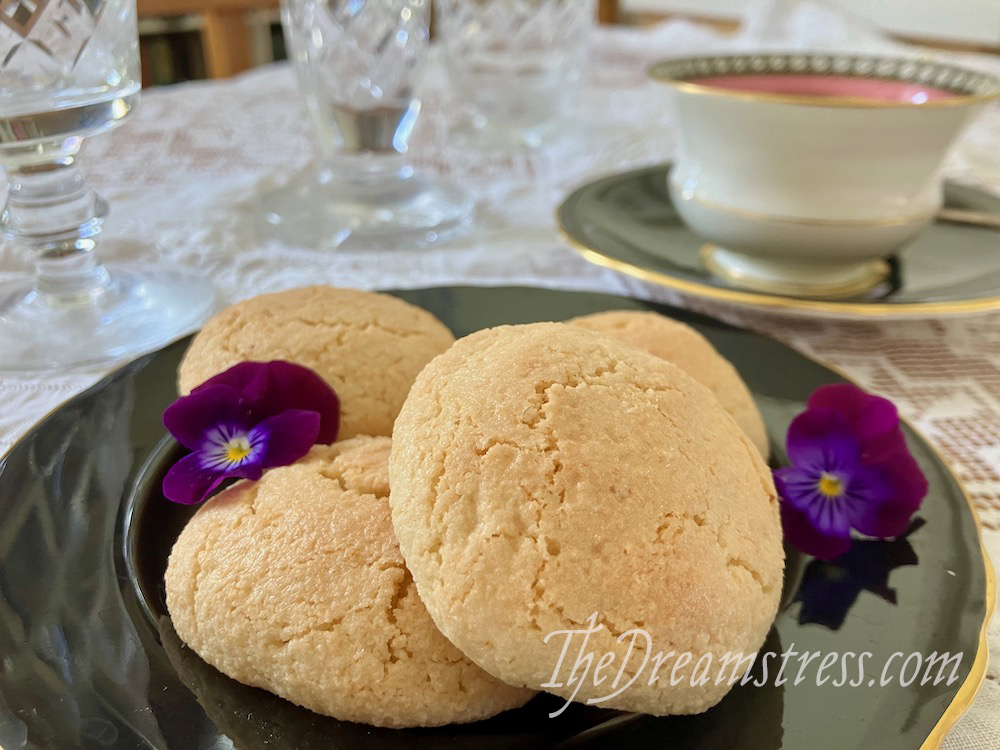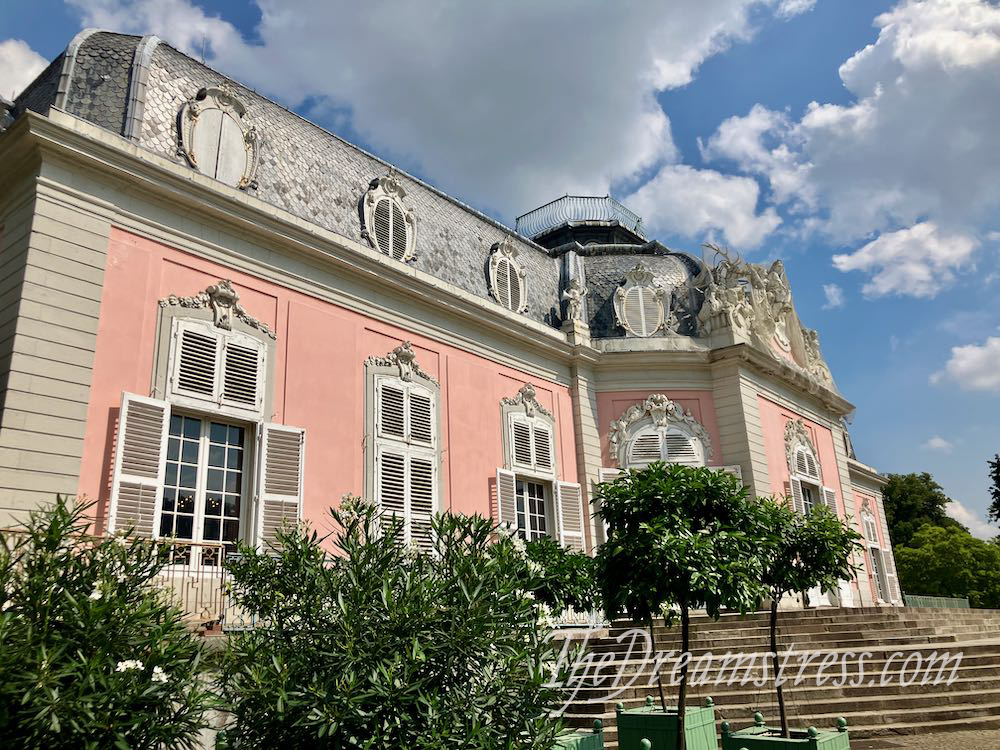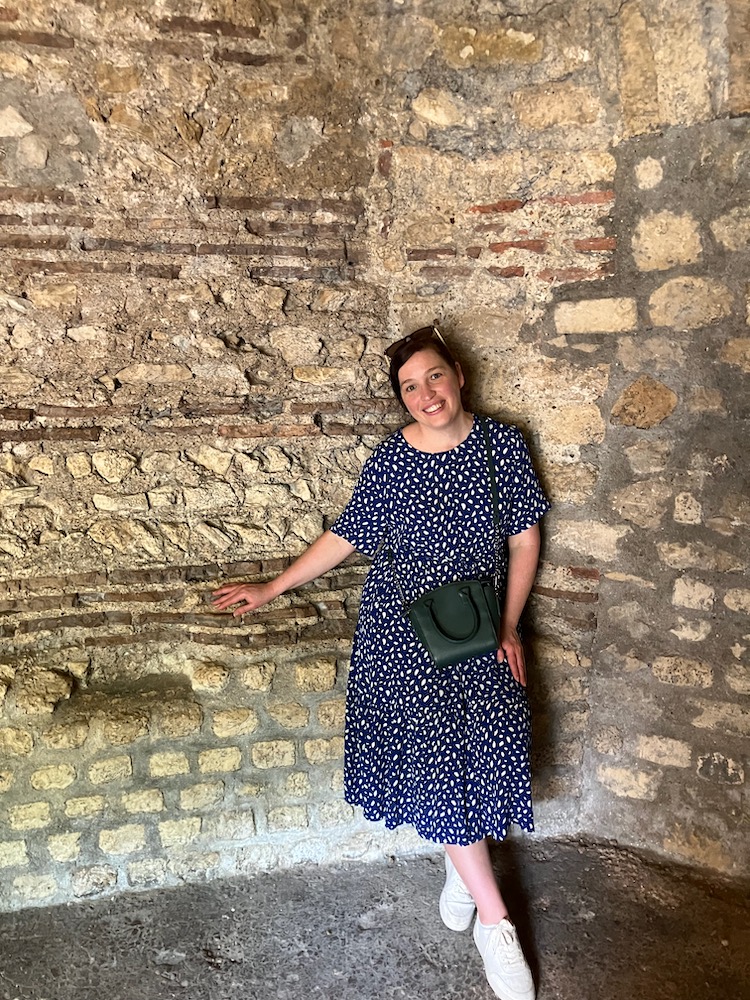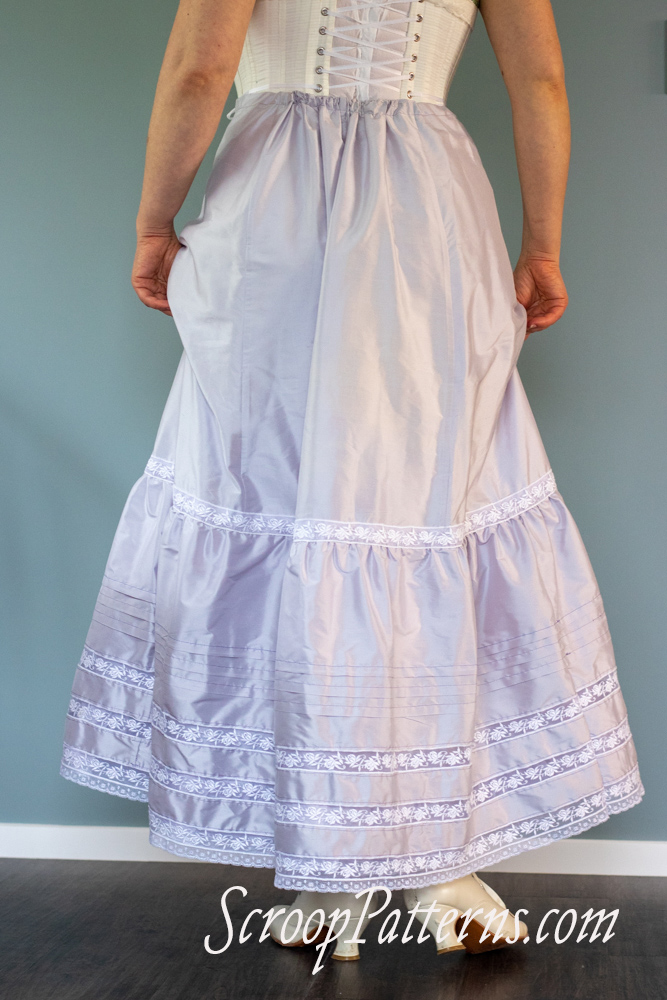It’s been a while since I managed to do a Rate the Dress. Not since October!
Last Rate the Dress: a 1770s dress from 1708-10 bizarre silk lampas
How much you liked this dress depended very much on how much you liked the very distinctive yellow-greens and bold ‘bizarre’ patterns of the silk. Some of you loved them, some of you loved its distinctiveness even if the style wouldn’t usually be your taste, and some weren’t quite so sure about those hues and patterns. However, even those of you not fond of the colours could still see the merit of the remake and the lustre of the silk. As the comment with the lowest rating said “I respect it, but I can’t say I like it very much.” But even the lowest rating was only 7.5, so the total is…
The Total: 9 out of 10
Very tidy and round!
This week: an 1866-67 day dress with extremely elaborate sleeves
This dress, in the 1860s most fashionable colour family (purple!) is all about the sleeves and trim.
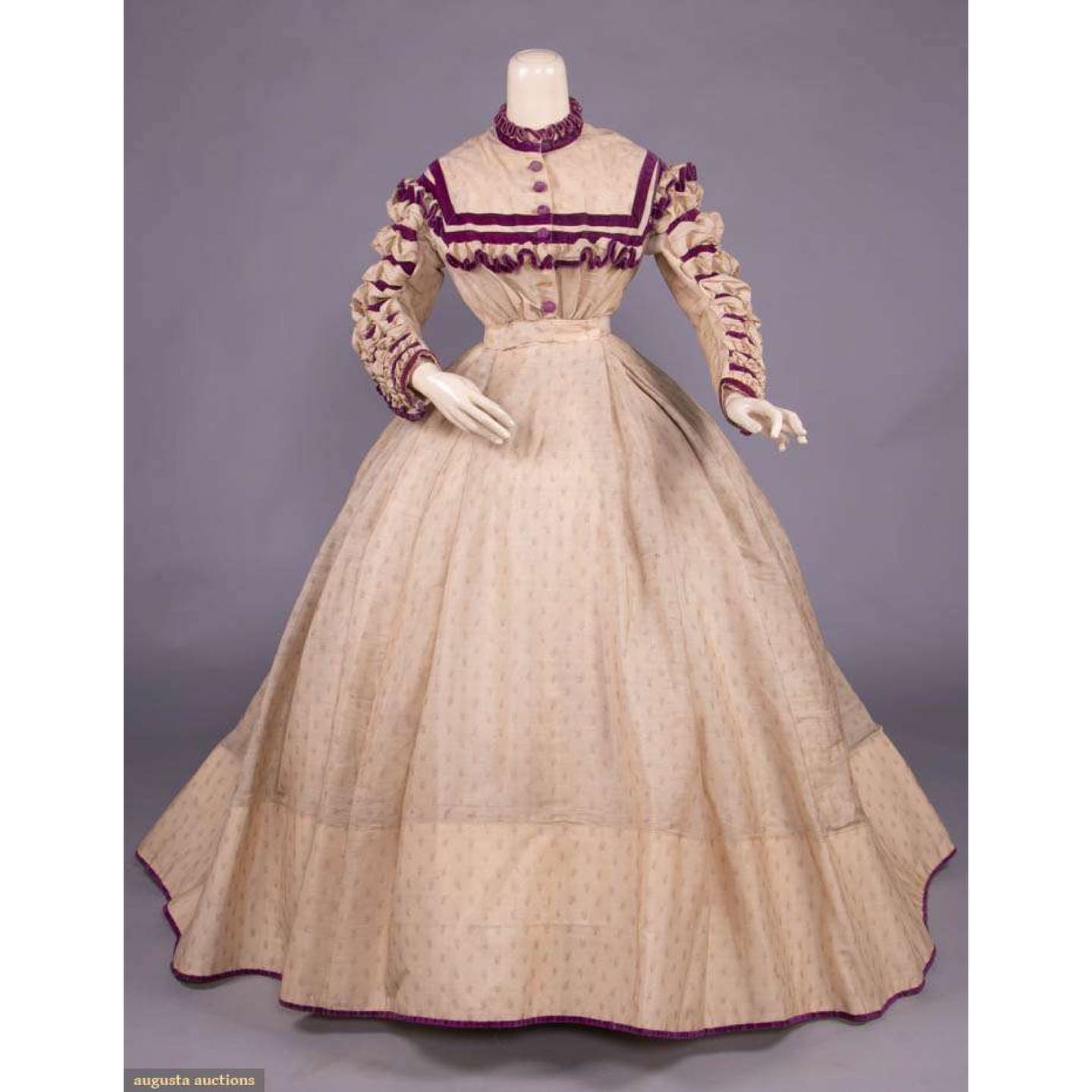
Day dress of figured barege trimmed in purple silk velvet ribbon, 1866-1867, sold by Augusta Auctions, Feb 2021
The distinctive 9-puff sleeves add pizzaz and personality to what would otherwise be a simple, almost plain, frock.

Day dress of figured barège trimmed in purple silk velvet ribbon, 1866-1867, sold by Augusta Auctions, Feb 2021
The dress is primarily made of barège (a very lightweight silk-wool blend leno-weave gauze fabric) in pale brown-lavender with a small floral print in purple.
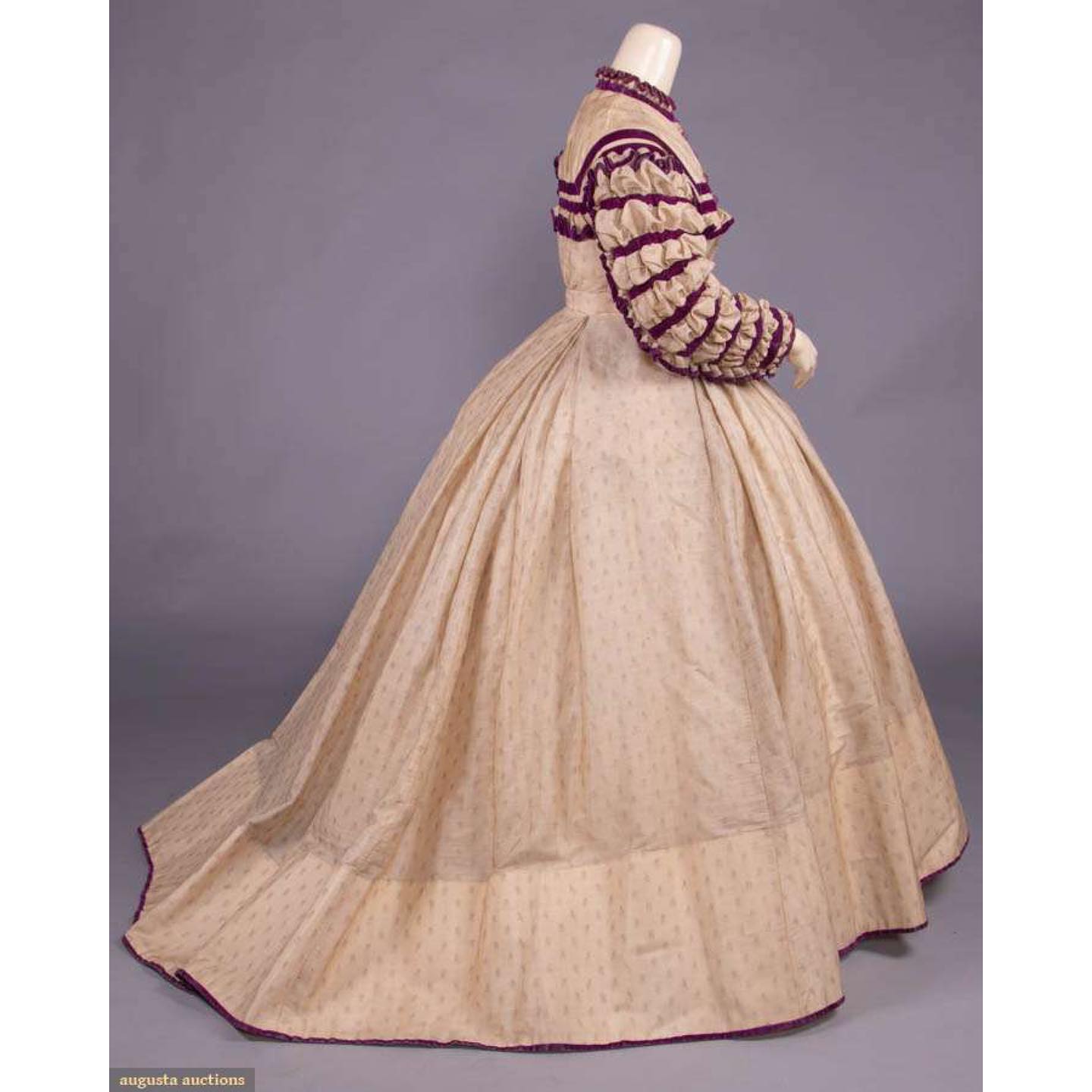
Day dress of figured barège trimmed in purple silk velvet ribbon, 1866-1867, sold by Augusta Auctions, Feb 2021
The purple of the print is echoed in the purple buttons running down the front, and in the vivid mauveine velvet ribbon that catches the puffs of the sleeves, frames the yoke, and edges the ruffles around the neck and yoke, and forms a hem binding at the bottom of the dress.
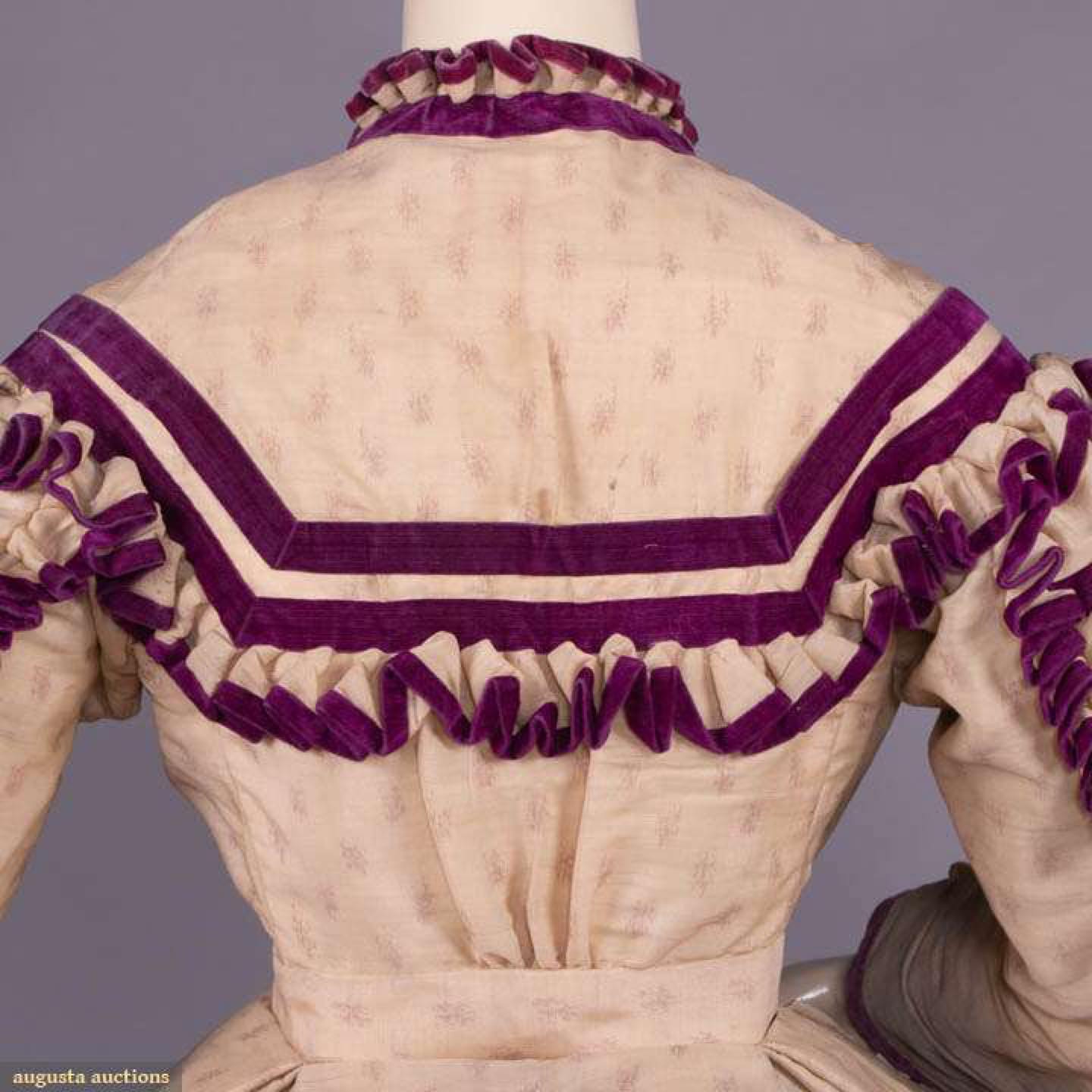
Day dress of figured barège trimmed in purple silk velvet ribbon, 1866-1867, sold by Augusta Auctions, Feb 2021
The buttons appear to have been made of the same velvet as the trim, but their pile has worn off with use, leaving them a softer purple hue.
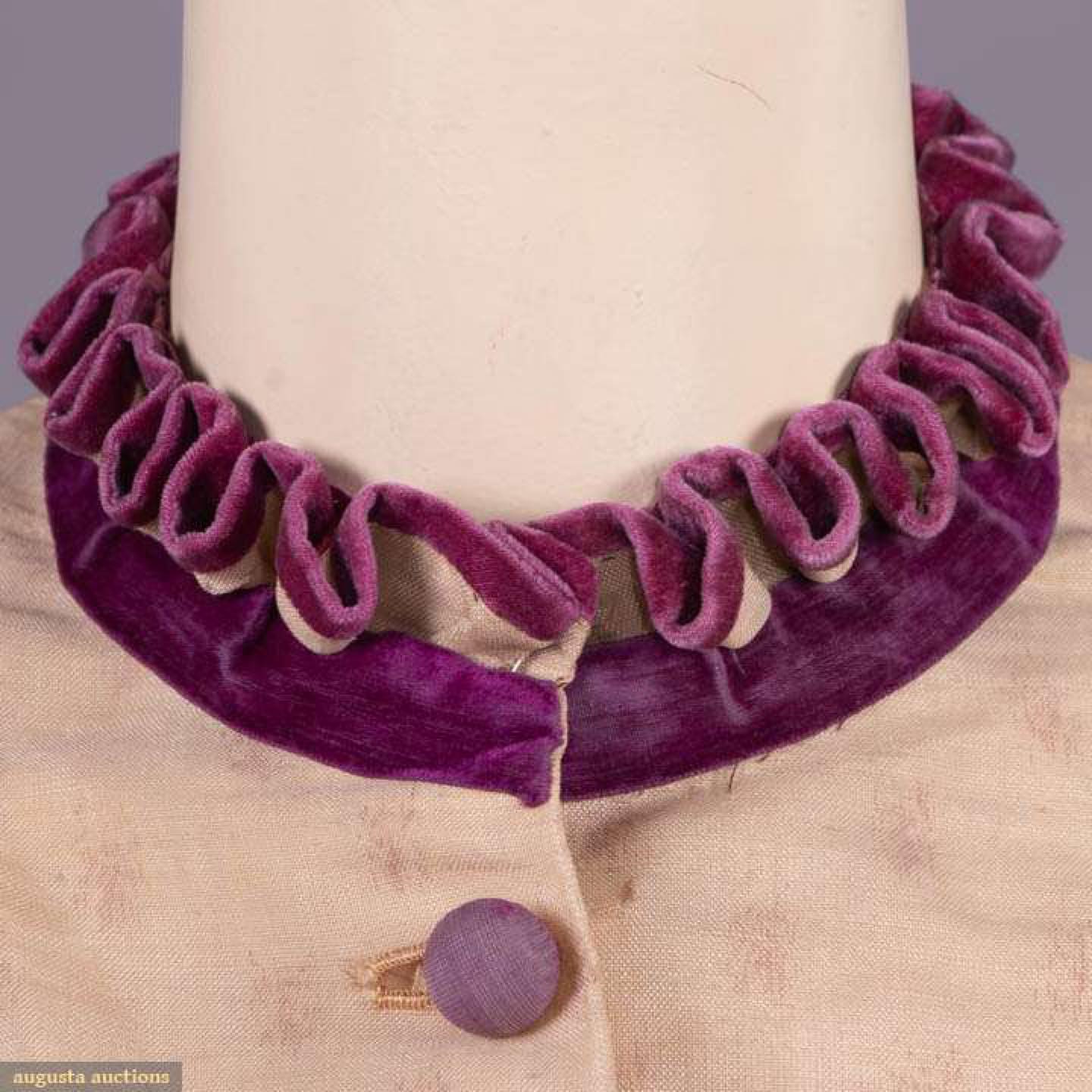
Day dress of figured barège trimmed in purple silk velvet ribbon, 1866-1867, sold by Augusta Auctions, Feb 2021
Possible the most surprising and distinctive bit of trim on the dress is the frill that edges the back-of-the-arm seam that joins the elaborately puffed outer sleeve with the simple under sleeve (very practical that simple under sleeve!)
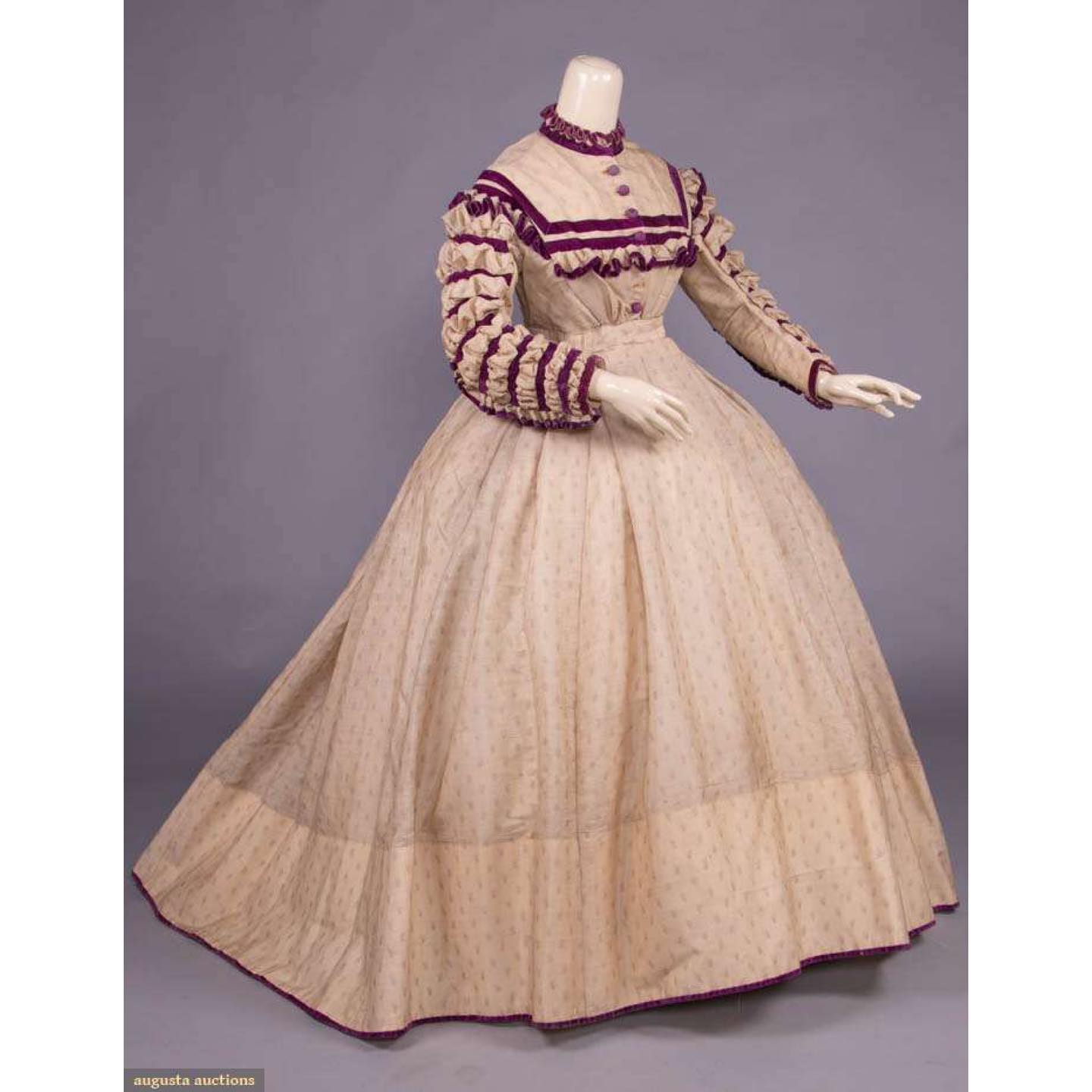
Day dress of figured barège trimmed in purple silk velvet ribbon, 1866-1867, sold by Augusta Auctions, Feb 2021
It creates an interesting visual line to the sleeves, particularly from the back.
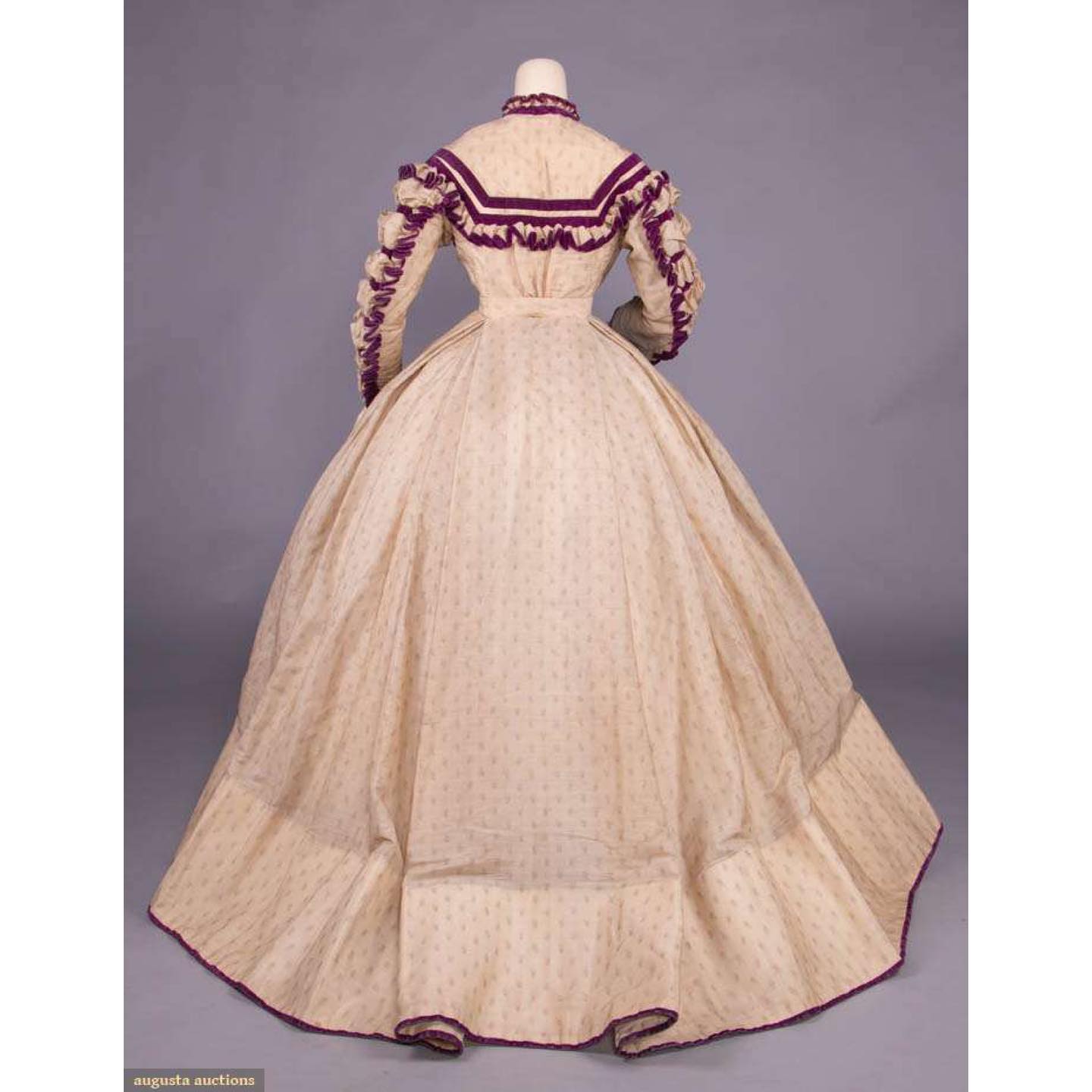
Day dress of figured barège trimmed in purple silk velvet ribbon, 1866-1867, sold by Augusta Auctions, Feb 2021
What do you think? Do those purple ruffles and puffs win a well-dressed rosette, or, when it comes to the 1860s, do you prefer a more classic pagoda or block sleeve?
Rate the Dress on a Scale of 1 to 10
A reminder about rating — feel free to be critical if you don’t like a thing, but make sure that your comments aren’t actually insulting to those who do like a garment. Phrase criticism as your opinion, rather than a flat fact. Our different tastes are what make Rate the Dress so interesting. It’s no fun when a comment implies that anyone who doesn’t agree with it, or who would wear a garment, is totally lacking in taste.
As usual, nothing more complicated than a .5. I also hugely appreciate it if you only do one rating, and set it on a line at the very end of your comment.

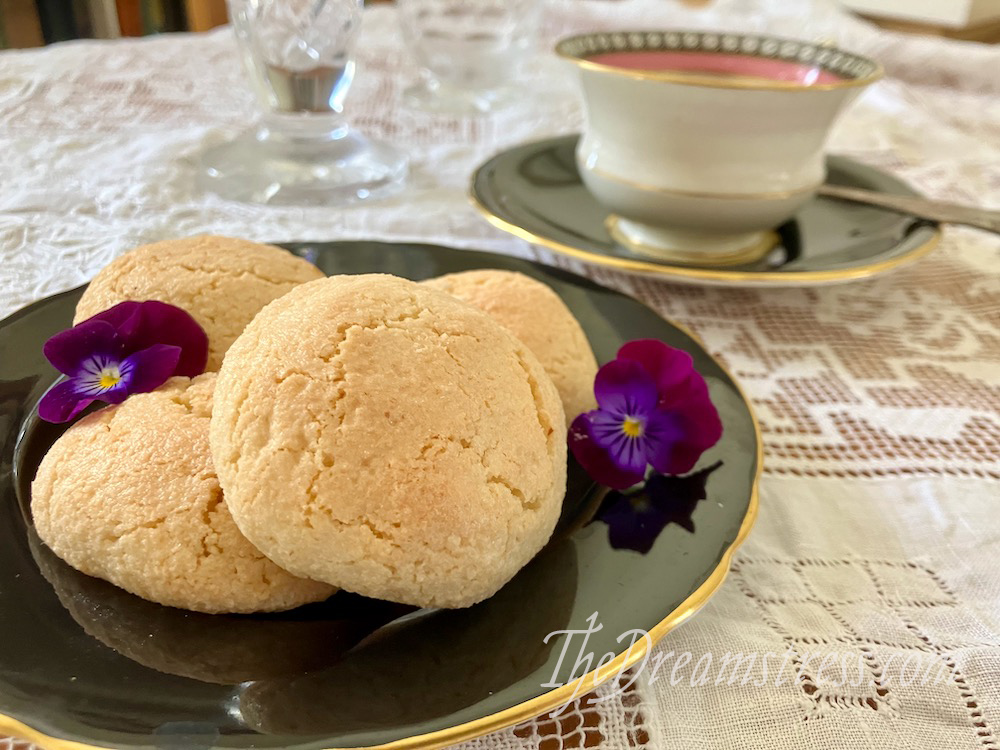

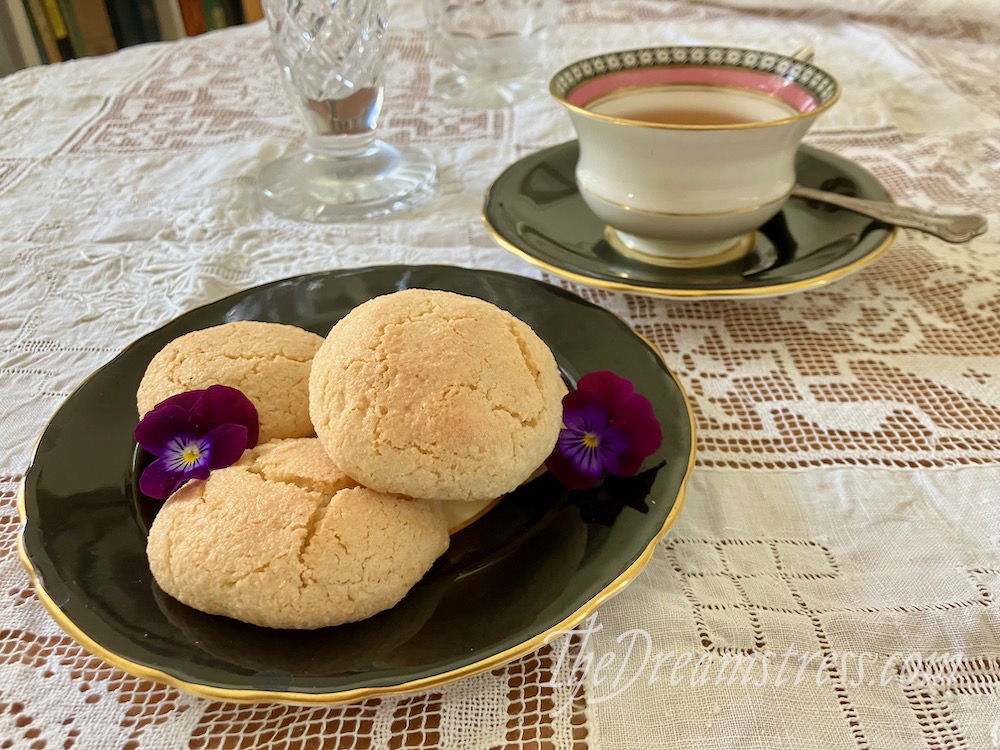
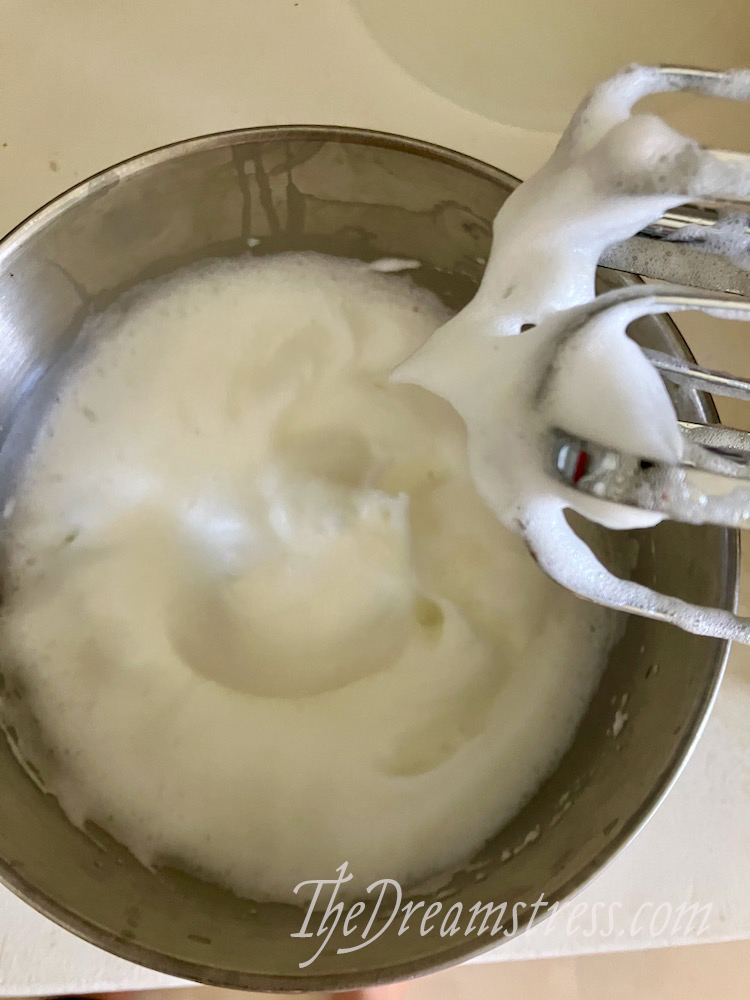
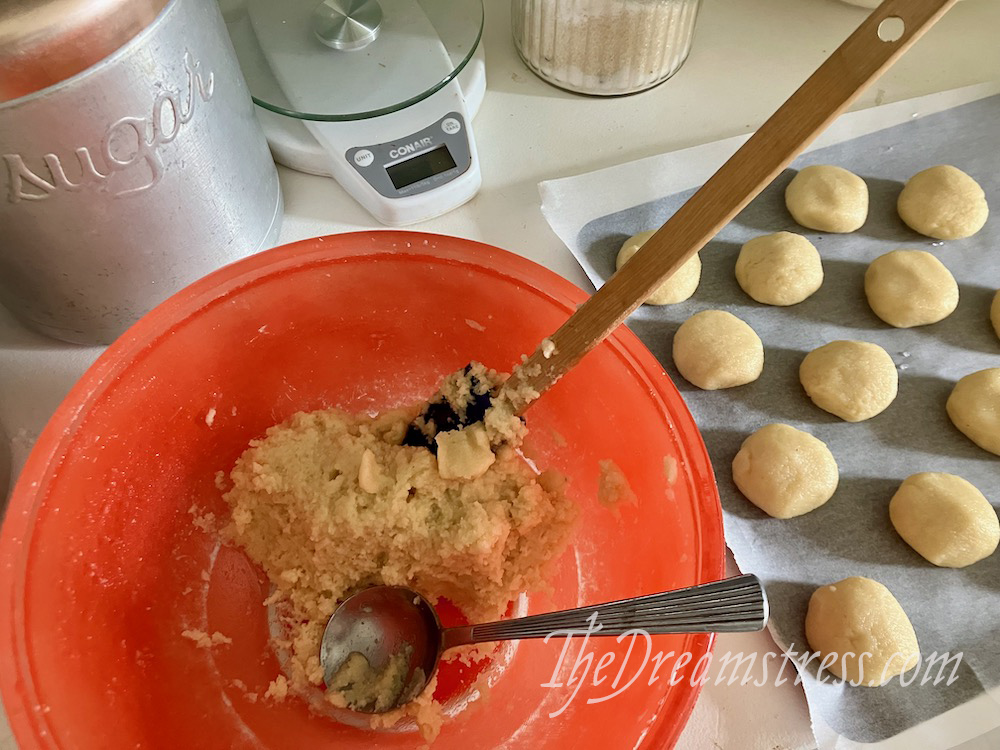 (you may find that ‘folding’ is a bit of a euphemism, as it’s impossible to get them well mixed without a bit o, but of blending that’s more like beating than folding, but don’t worry, they will still puff and have a lovely texture)
(you may find that ‘folding’ is a bit of a euphemism, as it’s impossible to get them well mixed without a bit o, but of blending that’s more like beating than folding, but don’t worry, they will still puff and have a lovely texture)
